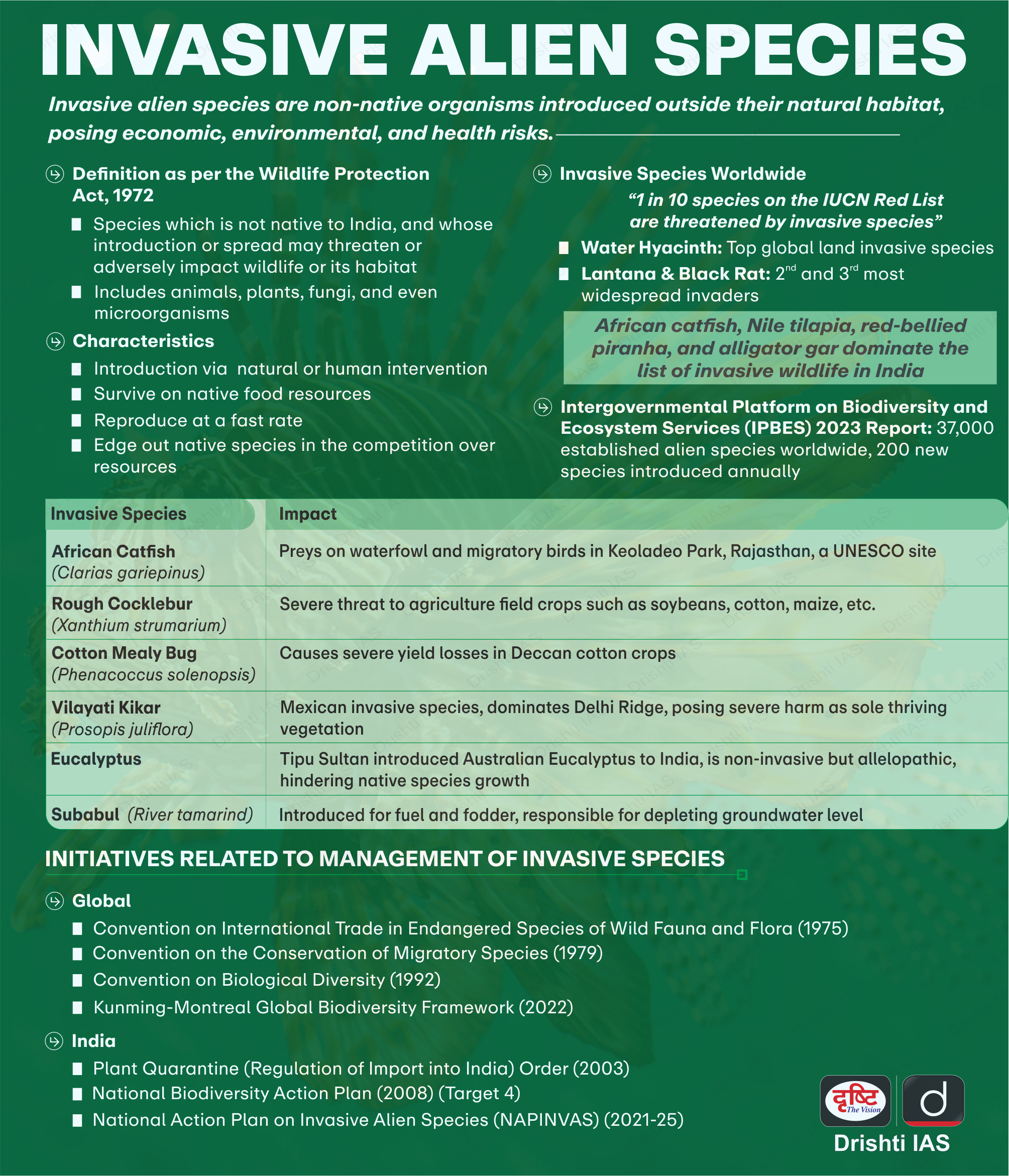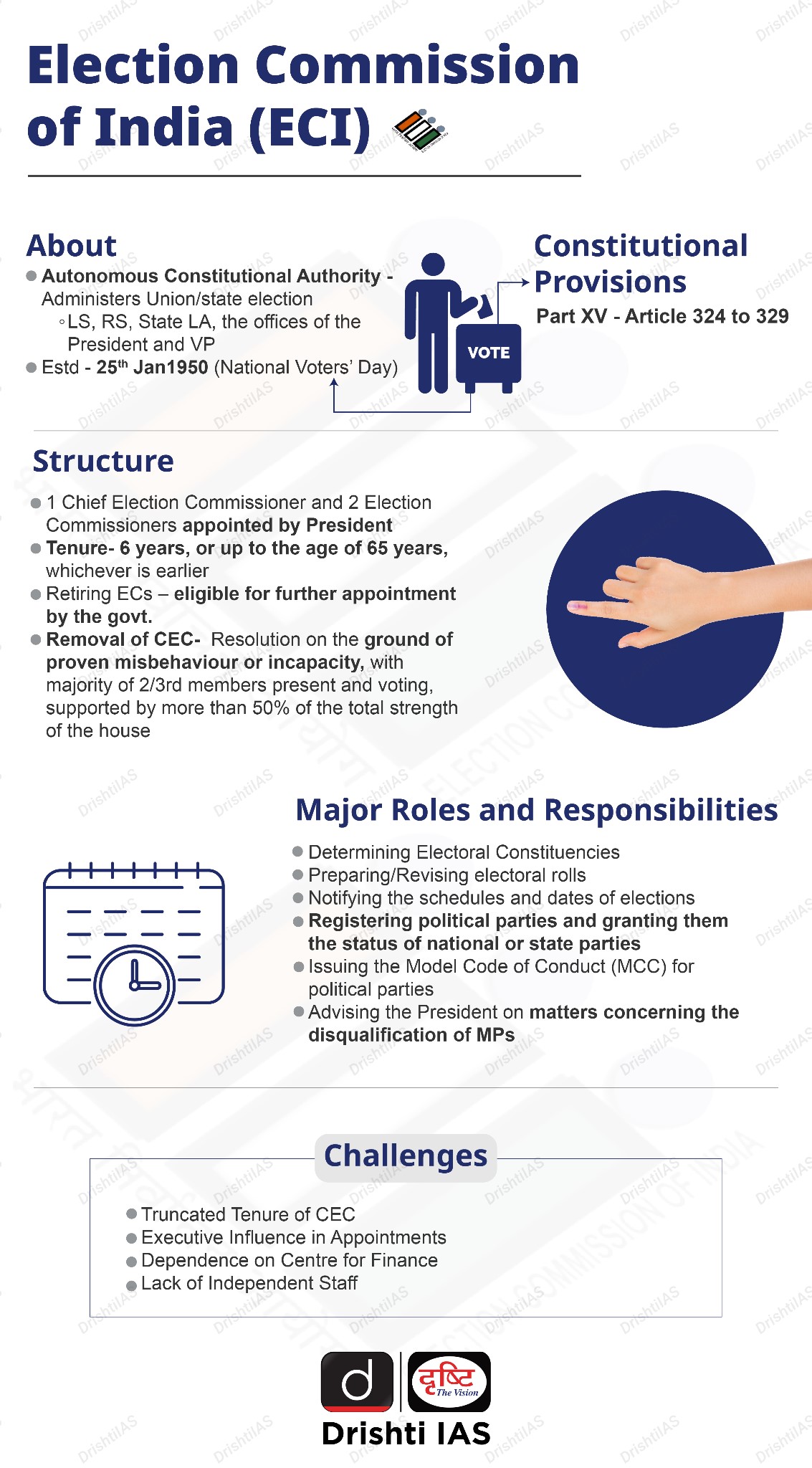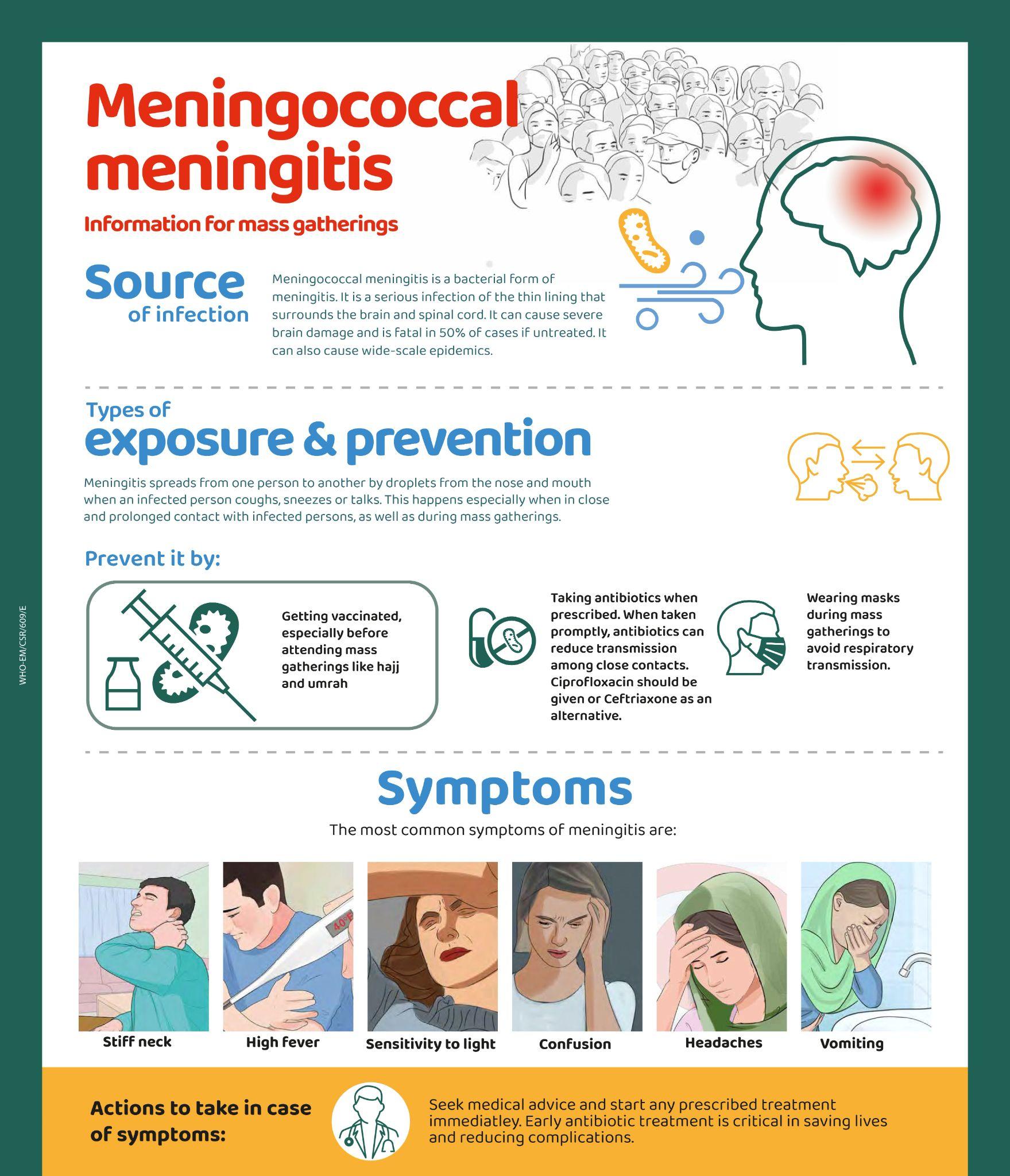Infographics
Science & Technology
POEM-3 Mission and Space Debris
For Prelims: ISRO's PSLV-C58/XPoSat Mission, PSLV Orbital Experimental Module-3, Vikram Sarabhai Space Centre, PSLV-C53 mission, Low earth orbit, Project NETRA, Space Situational Awareness Control Centre.
For Mains: POEM Mission, Initiatives Around the World Related to Space Debris.
Why in News?
Recently, ISRO's PSLV-C58/XPoSat mission achieved near-zero debris in Earth's orbit by converting the final stage into the PSLV Orbital Experimental Module-3 (POEM-3), which then safely re-entered the atmosphere rather than remaining in orbit after completing its mission.
What is POEM?
- POEM is an innovative space platform developed by the Vikram Sarabhai Space Centre (VSSC).
- It repurposes the fourth stage of a PSLV rocket into a stable orbital station for conducting in-space scientific experiments with diverse payloads.
- Its inaugural use occurred during the PSLV-C53 mission in June 2022.
- Normally, the fourth stage of the PSLV becomes space debris after deploying satellites, but in the PSLV-C53 mission, it served as a stabilised platform for experiments.
- According to ISRO, POEM has a dedicated Navigation Guidance and Control (NGC) system for attitude stabilisation, which stands for controlling the orientation of any aerospace vehicle within permitted limits.
- POEM-3 Mission: It was launched as part of the PSLV C-58 mission on 1st January 2024.
- After deploying the XpoSat satellite, the fourth stage was transformed into POEM-3 and lowered to a 350-km orbit, significantly reducing the risk of space debris generation.
Note: ISRO first demonstrated the capability of using PS4 (fourth stage of PSLV) as an orbital platform in 2019 with the PSLV-C44 mission that injected Microsat-R and Kalamsat-V2 satellites into their designated orbits. The fourth stage in that mission was kept alive as an orbital platform for space-based experiments.
What is Space Debris?
- About: Space debris in the low earth orbit (LEO) mainly comprises pieces of spacecraft, rockets, and defunct satellites, and the fragments of objects that have deteriorated explosively as a result of anti-satellite missile tests.
- The LEO extends from 100 km above the earth’s surface up to 2000 km above.
- Debris also exists, but in smaller volumes, in the geosynchronous orbit (GEO), which is 36,000 km above the earth’s surface.
- Risk: Space debris often flies around at high speeds of up to 27,000 kilometres per hour. Due to their sheer volume and momentum, they pose a risk to several space assets.
- It also leads to two major risks, it creates unusable regions of the orbit due to excessive debris, and leads to the ‘Kessler syndrome (creation of more debris due to cascading collisions resulting from one collision).
- The number of space objects (debris or functional equipment) greater than 10 cm in size in LEO is expected to be about 60,000 by 2030, per ISRO estimates.
- The rise of private space agencies is exacerbating the problem.
- Current Status: According to ISRO’s Space Situational Assessment Report 2022, the world placed 2,533 objects in space in 179 launches in 2022 alone.
- In 2022, three major on-orbit break-up events occurred, contributing to most of the debris created that year:
- March 2022: Intentional destruction of Russia’s Cosmos 1048 in an anti-satellite test.
- July 2022: Break-up of the upper stage of Japanese H-2A while deploying the GOSAT-2 satellite.
- November 2022: Accidental explosion of the upper stage of China’s Yunhai-3.
- Other Related Events:
- NASA has recently confirmed that a mysterious object, which crashed into a home in Florida, was debris from the International Space Station (ISS).
- In 2023, an object discovered on the Western Shores of Australia was identified as debris from an ISRO rocket.
- In 2022, three major on-orbit break-up events occurred, contributing to most of the debris created that year:
- Related International Space Laws: Currently, there are no international space laws about LEO debris.
- However, most space-exploring nations abide by the Space Debris Mitigation Guidelines 2002 specified by the Inter-Agency Space Debris Coordination Committee (IADC), which the UN endorsed in 2007.
- The guidelines outline methods to limit accidental collisions in orbit, break-ups during operations, intentional destruction, and post-mission break-ups.
- However, most space-exploring nations abide by the Space Debris Mitigation Guidelines 2002 specified by the Inter-Agency Space Debris Coordination Committee (IADC), which the UN endorsed in 2007.
Note: The Inter-Agency Space Debris Coordination Committee is an international governmental forum for the worldwide coordination of activities related to the issues of man-made and natural debris in space. ISRO is a member agency.
How are Countries Worldwide Dealing with the Problem of Space Debris?
- India: India is actively addressing space debris issues. Besides POEM missions, ISRO established a Space Situational Awareness Control Centre to safeguard valuable assets from collisions.
- Project NETRA is also an early warning system in space to detect debris and other hazards to Indian satellites.
- Manastu Space, an Indian startup, focuses on in-space refuelling, satellite de-orbiting, and extending satellite lifespan.
- Japan: Japan has a project, called the Commercial Removal of Debris Demonstration (CRD2), to tackle space junk.
- Europe: The European Space Agency (ESA) has adopted a ‘Zero Debris charter,’ which includes multiple ways to mitigate space debris. It has also called for zero space debris by 2030.
- USA: NASA had instituted its Orbital Debris Program in 1979 to find ways to create less orbital debris and design equipment to track and remove existing debris.
- Sixth U.S. Armed Forces wing, called the Space Force, tracks space debris and collisions in LEO.
Way Forward
- Space-Based Recycling and Repurposing: Developing technologies to collect and process space debris in orbit.
- These "space refineries" could break down debris into usable materials for constructing new spacecraft or habitats in space, reducing the need for new launches from Earth.
- Techniques like 3D printing could utilise recycled materials, minimising the amount of raw materials we launch into space.
- Robotic Arms and Capture Mechanisms: Developing advanced robotic arms equipped with cameras and sensors for grappling with debris. These robots could be deployed from service satellites to capture and deorbit large pieces of debris that pose a significant collision risk.
- Docking mechanisms could be installed on satellites during manufacturing, allowing service satellites to easily attach and deorbit defunct satellites.
- Space Traffic Management Systems: Developing sophisticated space traffic management systems to track debris and predict potential collisions.
- This would allow active satellites to perform manoeuvres to avoid debris, reducing the risk of accidental collisions that create even more debris.
- International collaboration is key for creating a comprehensive space traffic management system that ensures the safety and sustainability of space exploration.
|
Drishti Mains Question Q. In light of the growing threat of space debris, discuss innovative strategies and technologies that can effectively mitigate this global concern. How can international collaboration play a crucial role in addressing this issue? |
UPSC Civil Services Examination, Previous Year Question (PYQ)
Q. International civil aviation laws provide all countries complete and exclusive sovereignty over the airspace above their territory. What do you understand by ‘airspace’? What are the implications of these laws on the space above this airspace? Discuss the challenges which this poses and suggest ways to contain the threat. (2014)

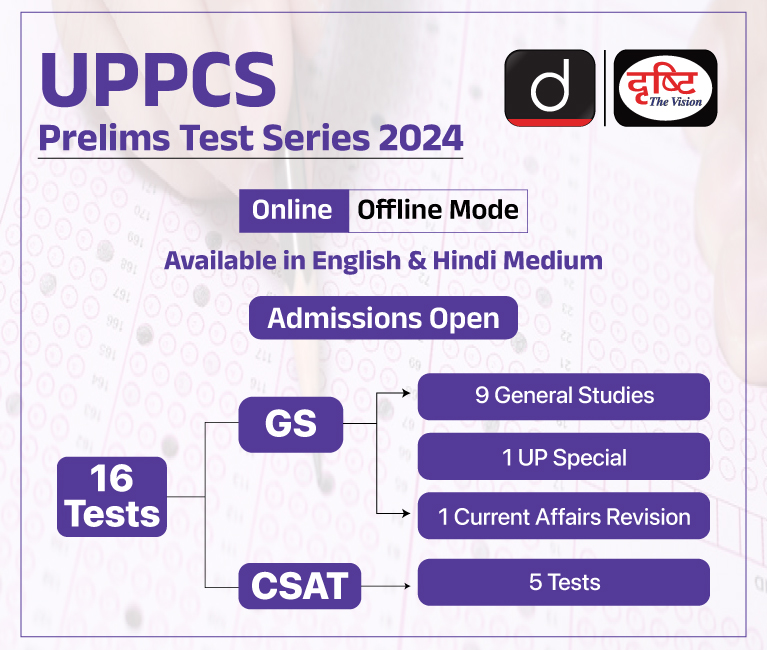
Governance
Right to Protection from Climate Change Impacts
For Prelims: Right to Protection from Climate Change Impacts, Supreme Court of India, Rights to life, Great Indian Bustard, Lesser Florican, Climate Change and Human Rights, Article 51A(g), MC Mehta vs Kamal Nath (2000), UN Environment Programme
For Mains: Interrelated Nature of Issues Related to Climate Change and Human Rights
Why in News?
Recently, the Supreme Court of India acknowledged the right to protection from climate change impacts as part of the fundamental rights to life (Article 21) and equality (Article 14) enshrined in the Indian Constitution.
- This ruling came during a case concerning the conservation of the Great Indian Bustard and the Lesser Florican.
- SC noted that the intersection of climate change and human rights has been put into sharp focus in recent years.
Where Climate Change and Human Rights Intersect?
- Right to Life and Livelihood: Climate change can directly affect people's right to life by causing extreme weather events like hurricanes or floods, which can lead to loss of life and property.
- For example, in low-lying coastal areas, rising sea levels due to climate change can threaten people's homes and livelihoods, forcing them to relocate.
- Access to Clean Water and Sanitation: Climate change can impact water sources, leading to water scarcity or contamination.
- This affects people's right to clean water and sanitation.
- In regions where droughts are becoming more frequent due to climate change, communities may struggle to access safe drinking water, leading to health issues.
- Health and Well-being: Climate change can exacerbate health problems, especially for vulnerable populations.
- For instance, increased heat waves can lead to heat-related illnesses and deaths, affecting the right to health.
- Similarly, changes in weather patterns can also impact food security and nutrition, affecting people's overall well-being.
- Migration and Displacement: Climate change-induced events such as sea-level rise, extreme weather events, or desertification can force people to migrate or be displaced from their homes. This intersects with human rights, particularly the right to residence and the right to seek asylum.
- For example, communities living in coastal areas may have to relocate due to sea-level rise, leading to issues related to resettlement and rights protection.
- Indigenous Peoples' Rights: Climate change can disproportionately affect indigenous communities that rely heavily on natural resources for their livelihoods and cultural practices.
- For instance, changes in ecosystems due to climate change can threaten traditional livelihoods like farming or fishing, impacting indigenous peoples' rights to land, resources, and cultural heritage.
How does the Supreme Court Interpret Constitutional Provisions Concerning Climate Change?
- Constitutional Provisions:
- Article 48A which mandates environmental protection and Article 51A(g) which promotes wildlife conservation, implicitly guarantee a right to be safeguarded from climate change.
- Article 21 recognises the right to life and personal liberty while Article 14 indicates that all persons shall have equality before law and the equal protection of laws.
- These articles are important sources of the right to a clean environment and the right against the adverse effects of climate change.
- In MC Mehta vs Kamal Nath Case, 2000, the Supreme Court stated that the right to a clean environment is an extension of the right to life.
- Implications of Recent Ruling:
- This decision has significant implications. It strengthens the legal basis for environmental protection efforts in India and provides a framework for legal challenges against inaction on climate change.
- It aligns with the growing international recognition of the human rights dimensions of climate change, as outlined by the UN Environment Programme and the UN Special Rapporteur on Human Rights and the Environment.
- This decision has significant implications. It strengthens the legal basis for environmental protection efforts in India and provides a framework for legal challenges against inaction on climate change.
What are the Challenges in Balancing Climate Change Mitigation with Human Rights Protection?
- Trade-offs: Some climate mitigation measures may conflict with human rights, such as restrictions on land use for conservation projects or displacement due to renewable energy infrastructure development.
- Finding solutions that minimise negative impacts while maximising benefits is challenging.
- Access to Resources: Climate actions like transitioning to renewable energy or implementing carbon pricing can impact access to essential resources like energy, water, and food, especially for marginalised communities.
- Environmental Migration: Climate-induced migration can strain social systems and lead to conflicts over resources and rights in host communities.
- Managing migration flows in a way that respects the rights of both migrants and host populations is a multifaceted challenge.
- Adaptation vs. Mitigation: Balancing efforts to reduce greenhouse gas emissions (mitigation) with investments in adaptation to climate impacts can be challenging.
- Prioritising one over the other can have implications for human rights, particularly for communities already facing climate-related risks.
- International Cooperation: Climate change is a global issue requiring international cooperation.
- Balancing national climate goals with global responsibilities and ensuring that climate actions do not undermine the rights of vulnerable communities across borders is a complex task.
Way Forward
- Human Rights-Based Carbon Pricing: Implementing a carbon tax with progressive rebates or dividends. Rebates can be larger for low-income households, offsetting the impact of higher energy costs and ensuring a just transition.
- Revenue from the carbon tax could be directed towards clean energy initiatives, social safety nets for vulnerable populations, and supporting developing countries in their climate mitigation and adaptation efforts.
- Green Technology Transfer and Capacity Building: Facilitating the transfer of green technologies to developing countries at affordable rates. This could involve relaxing intellectual property restrictions or creating technology sharing partnerships.
- This would allow developing countries to pursue low-carbon development pathways without compromising their right to development.
- Human Rights Impact Assessments: Conduct thorough human rights impact assessments before implementing any climate change mitigation or adaptation strategies.
- This would help identify potential risks and ensure that solutions are designed in a way that respects and protects human rights.
|
Drishti Mains Question Q. Evaluate the effectiveness of legal frameworks and international agreements in ensuring the protection of human rights in the context of climate change. |
UPSC Civil Services Examination, Previous Year Questions (PYQs)
Prelims:
Q. Other than the Fundamental Rights, which of the following parts of the Constitution of India reflect/ reflects the principles and provisions of the Universal Declaration of Human Rights (1948)? (2020)
- Preamble
- Directive Principles of State Policy
- Fundamental Duties
Select the correct answer using the code given below:
(a) 1 and 2 only
(b) 2 only
(c) 1 and 3 only
(d) 1, 2 and 3
Ans: (d)
Q.With reference to ‘Global Climate Change Alliance’, which of the following statements is/are correct? (2017)
- It is an initiative of the European Union.
- It provides technical and financial support to targeted developing countries to integrate climate change into their development policies and budgets.
- It is coordinated by World Resources Institute (WRI) and World Business Council for Sustainable Development (WBCSD).
Select the correct answer using the code given below:
(a) 1 and 2 only
(b) 3 only
(c) 2 and 3 only
(d) 1, 2 and 3
Ans: (a)
Mains:
Q.1 Describe the major outcomes of the 26th session of the Conference of the Parties (COP) to the United Nations Framework Convention on Climate Change (UNFCCC). What are the commitments made by India in this conference? (2021)
Q.2 ‘Climate Change’ is a global problem. How will India be affected by climate change? How Himalayan and coastal states of India will be affected by climate change? (2017)


Indian Polity
Reforms to Municipal Elections
For Prelims: State Election Commission, Constitutional Bodies, Municipal Elections
For Mains: Challenges and Awaited Reforms related to Municipal Elections.
Why in News?
The recent Supreme Court judgment on the Chandigarh mayoral election resurfaces the issues associated with the electoral processes of local urban bodies.
- Unlike, Lok sabha and state assemblies elections in India, municipal elections still face the challenges of timely elections and smooth transitions of power.
Legal Provisions for Local Bodies’ Elections:
- Constitutional Provisions:
- The superintendence, direction and control of the preparation of the electoral rolls for, and the conduct of, all elections to the panchayats and municipalities shall be vested in the State Election Commission (SEC).
- The 74th Constitutional Amendment bars the interference by courts in the electoral matters of municipalities.
- Article 243U through the 74th Constitution Amendment Act mandates a five-year tenure for urban local governments.
- Legal Provisions:
- The Supreme Court, in Suresh Mahajan v. State of Madhya Pradesh Case, 2022, stressed the inviolability of this constitutional mandate.
What is the Status of Municipal Elections in India?
- Annual Survey of India’s City-Systems 2023 by Janaagraha’s (non-profit institution):
- Over 1,400 municipalities in India did not have elected councils in place as of September 2021.
- This indicates a significant and widespread issue across the country.
- The Comptroller and Auditor-General of India (CAG)'s audit revealed that, between 2015 and 2021, over 1,500 municipalities didn't have elected councils.
- Major cities like Chennai, Delhi, Mumbai, and Bengaluru faced delays ranging from months to years in holding elections.
What are the Challenges Associated with Local Bodies' Elections?
- Discretionary Powers in Scheduling Elections:
- Due to the ambiguous constitutional safeguards, government officials like SECs currently possess discretionary powers when it comes to scheduling elections.
- This flexibility can sometimes lead to inconsistent or delayed election timelines, which may undermine the democratic process's transparency and fairness.
- Undue Influence by State Governments:
- There is a concern about the potential undue influence exerted by State governments to delay elections for political or strategic reasons.
- Such interference can compromise the integrity of the electoral process and erode public trust in democratic institutions.
- Reliance on Manual Ballot Paper-Based Processes:
- The continued reliance on manual ballot paper-based processes introduces vulnerabilities, such as errors in counting, the potential for tampering, and delays in declaring election results.
- This traditional approach may not be as efficient or secure as modern Electronic Voting Machine (EVM) and Voter Verifiable Paper Audit Trail (VVPAT), which could enhance the transparency and credibility of electoral outcomes.
- Delayed Formation of Councils:
- Even after elections, municipal councils in urban local governments were not promptly constituted.
- For example: In Karnataka, a delay of 12-24 months was observed post-elections.
- Even after elections, municipal councils in urban local governments were not promptly constituted.
What are the Possible Solutions Regarding Local Bodies’ Elections?
- Empowering SECs: To deal with the challenges effectively, SECs need to play a more significant role in overseeing the electoral process using the powers mentioned in the Articles 243K and 243ZA of the Constitution.
- Empowerment for Ward Delimitation: Only 11 out of 35 states and union territories have empowered SECs to conduct ward delimitation.
- Ward delimitation is crucial for ensuring fair and equitable representation in municipal elections.
- SECs should be granted greater authority, including the power to conduct ward delimitation.
- Accountability Mechanisms: Holding election officials and authorities accountable for any delays or irregularities in the conduct of municipal elections. This can be done through transparent investigation processes and appropriate disciplinary action.
- Policy Reforms: Addressing the challenges highlighted, from scheduling elections to ensuring fair processes, requires comprehensive policy reforms.
- The idea of ‘ One Nation, One Election’ can be explored with major focus on the efficient and timely election of the local bodies.
Conclusion
There is a need for comprehensive reforms relating to municipal elections in India, addressing delays, enforcing constitutional mandates, empowering State Election Commissions, and modernising electoral processes to ensure transparency, fairness, and accountability.
|
Drishti Mains Question Q.Discuss the challenges and possible solutions regarding timely elections and smooth transitions of power of Local Bodies. |
UPSC Civil Services Examination, Previous Year Questions (PYQs)
Prelims:
Q. Consider the following statements: (2017)
- The Election Commission of India is a five-member body.
- The Union Ministry of Home Affairs decides the election schedule for the conduct of both general elections and bye-elections.
- Election Commission resolves the disputes relating to splits/mergers of recognised political parties.
Which of the statements given above is/are correct?
(a) 1 and 2 only
(b) 2 only
(c) 2 and 3 only
(d) 3 only
Ans: (d)
Mains:
Q. Discuss the role of the Election Commission of India in the light of the evolution of the Model Code of Conduct. (2022)


Important Facts For Prelims
Surya Tilak Project Ram Lalla
Why in News?
The Surya Tilak Project, a remarkable endeavour, recently unfolded at Ayodhya, bringing sunlight to the forehead of Sri Ram Lalla.
What is the Surya Tilak Project?
- About:
- The Surya Tilak Project represents a unique fusion of technology and tradition, meticulously engineered to illuminate the forehead of Lord Ram's idol with a precise beam of sunlight during the revered festival of Ram Navami.
- The Indian Institute of Astrophysics (IIA) under the Department of Science and Technology was crucial in the Surya Tilak Project at Ayodhya.
- Calculation and Positioning
- The IIA team carried out the calculation of the sun's position, design, and optimisation of the optical system for the Surya Tilak Project.
- The Ram Navami date varies each year following the Gregorian calendar due to its solar nature, while the Hindu calendar is lunar-based.
- The Gregorian calendar is based on Earth's revolution around the Sun, making it a solar calendar with roughly 365 days in a year, whereas the Hindu calendar is based on the Moon's revolution around Earth, making it a lunar calendar with roughly 354 days in a year.
- Design and Implementation:
- The Surya Tilak Project's core is its opto-mechanical system, seamlessly integrating optical and mechanical components for precise sunlight manipulation.
- This opto-mechanical system, similar to a periscope (apparatus consisting of a tube attached to a set of mirrors or prisms, by which an observer can see things that are otherwise out of sight), uses a 19-gear system to make yearly adjustments for the sun's position.
- Every year, one gear tooth is manually turned to adjust the angle of the pickup mirror.
- The number 19 corresponds to the Metonic cycle, which lasts 19 years and resets the system for the Moon's phases to recur on the same days of the solar year.
- The Surya Tilak with 4 mirrors and 2 lenses was executed, with IIA technical experts participating in testing, assembly, integration, and validation at the site.
- The implementation of the optomechanical system at the site was done by Central Building Research Institute (CBRI): Council of Scientific & Industrial Research (CSIR).
- The Surya Tilak Project's core is its opto-mechanical system, seamlessly integrating optical and mechanical components for precise sunlight manipulation.
- Future Implementation
- The final design of the Surya Tilak with 4 mirrors and 4 lenses will be implemented once the full temple is constructed, with the mechanism designed to accommodate a shift in the calendar date of Ram Navami.
- Maintenance and Challenges:
- An annual shift of the first mirror must be performed manually before Ram Navami every year, and the mechanism will not work in the absence of sunlight due to clouds or rain.
Indian Institute of Astrophysics (IIA)
- The IIA, established in 1786 in Madras and later moved to Kodaikanal in 1899, became the autonomous Indian Institute of Astrophysics in 1971.
- Its headquarters are now in Bengaluru.
- The institute is funded by the Department of Science and Technology and is a leading research and education institution in astronomy and physics.
- Its main observing facilities are located at Kodaikanal, Kavalur, Gauribidanur, and Hanle.
- The institute's activities include observational solar and atmospheric physics, nighttime astronomy with several telescopes, and the development of instruments.
Read more: Ram Temple

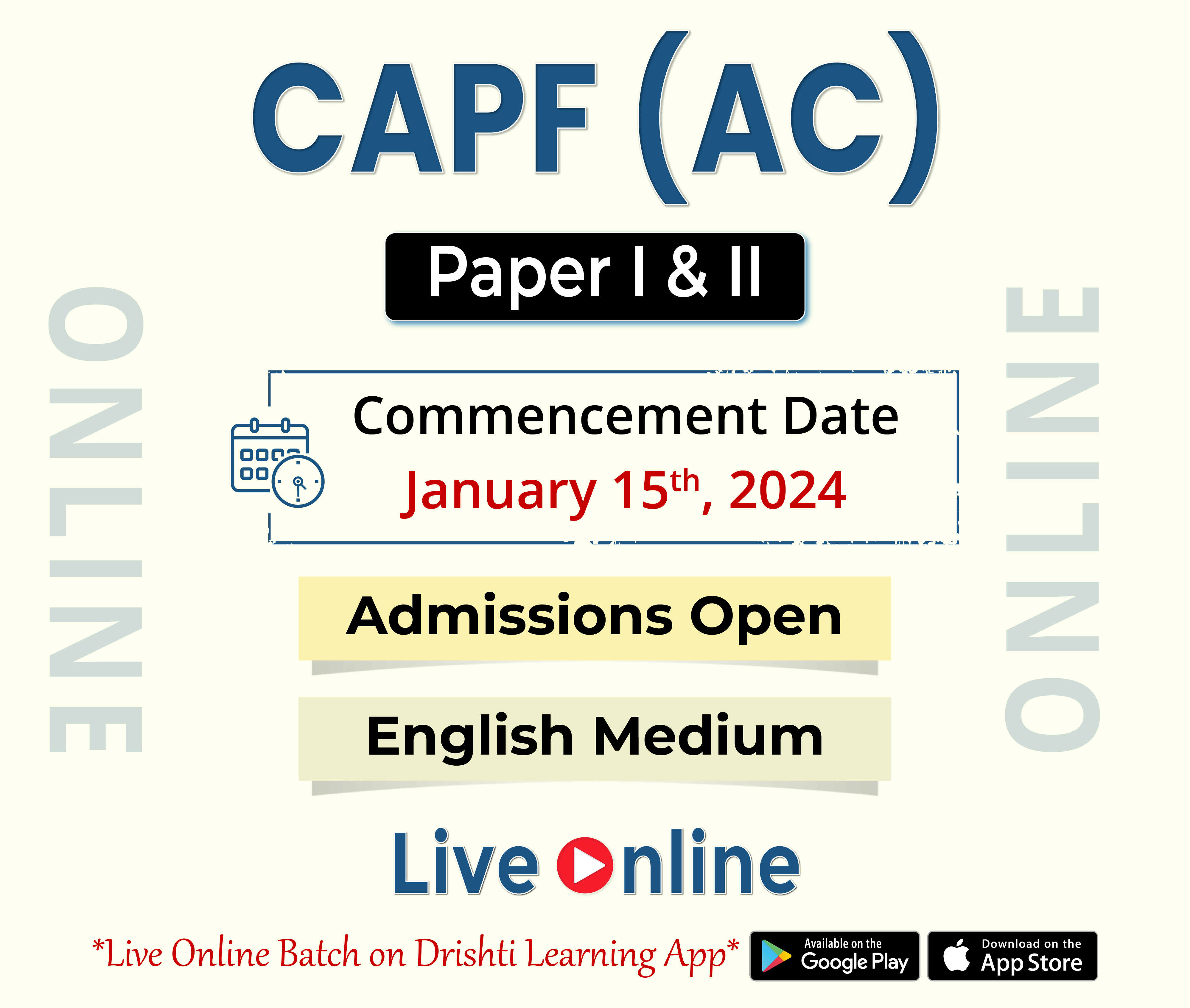
Important Facts For Prelims
Swiss Women Climate Change Case
Why in News?
The recent ruling by the European Court of Human Rights (ECHR) in favour of a group of Swiss women has significant implications for climate change litigation.
What was the Swiss Women Climate Change Case?
- Petitioners: The case was brought against the Swiss government by KlimaSeniorinnen Schweiz (Association of Senior Women for Climate Protection Switzerland), a group of women climate activists all above the age of 64.
- Claim: The women argued that the Swiss government’s inadequate climate policies violate their right to life and other guarantees under the European Convention on Human Rights.
- Medical Vulnerability: The petitioners highlighted their medical vulnerability as senior citizens to extreme heat caused by climate change.
- Reports by the Intergovernmental Panel on Climate Change (IPCC) show that the Swiss population of senior women, especially those over 75 are more prone to heat-related medical problems like ‘dehydration, hyperthermia, fatigue, loss of consciousness, heat cramps and heat strokes.
- Court’s Verdict:
- The ECHR noted that individuals have the right to effective protection from the serious adverse effects of climate change on their lives, health, well-being, and quality of life under Article 8 of the convention.
- Article 8 of the Convention of Human Rights includes the right for individuals to be protected by the state from the serious effects of climate change on their lives.
- The court found that the Swiss government had not enacted adequate laws to combat climate change impacts and failed to meet greenhouse gas (GHG) emission goals.
- The ECHR noted that individuals have the right to effective protection from the serious adverse effects of climate change on their lives, health, well-being, and quality of life under Article 8 of the convention.
- Significance of Ruling:
- The ECHR's verdict applies to 46 member states, including all European Union countries, plus the United Kingdom (UK) and various other non-EU countries.
- Climate and human rights cases in European courts must now heed ECHR's judgement, potentially spurring similar filings across member countries.
- The global rise in climate litigation saw 2,180 cases filed by 2022, increasing from 884 in 2017 and 1,550 in 2020, according to the Global Climate Litigation Report: 2023 Status Review.
- This trend could spur further accountability, with judgments potentially impacting climate litigation worldwide.
- The ruling emphasises the need to align policies with climate science.
- The ECHR's verdict applies to 46 member states, including all European Union countries, plus the United Kingdom (UK) and various other non-EU countries.
Similar Cases
- In 2017, a 9-year-old girl from Uttarakhand filed a case in India, arguing that the country's environmental laws and climate policies require greater action to address climate change. However, her petition was ultimately rejected.
- In August 2023, Montana youths won a case against the state government, which neglected climate change while approving fossil fuel projects, violating their constitutional right to a clean environment.
Protection Rights in India against Climate Change Impact
- The Indian Supreme Court broadened the scope of Articles 14 (right to equality) and 21 (protection of life and personal liberty), stating that people have the right to be free from the adverse effects of climate change.
Read more: Right to Protection from Climate Change Impacts
UPSC Civil Services Examination, Previous Year Questions (PYQs)
Prelims
Q. With reference to the ‘Global Climate Change Alliance’, which of the following statements is/are correct? (2017)
- It is an initiative of the European Union.
- It provides technical and financial support to targeted developing countries to integrate climate change into their development policies and budgets.
- It is coordinated by the World Resources Institute (WRI) and World Business Council for Sustainable Development (WBCSD).
Select the correct answer using the code given below:
(a) 1 and 2 only
(b) 3 only
(c) 2 and 3 only
(d) 1, 2 and 3
Ans: (a)


Important Facts For Prelims
Prostate Cancer
Why in News?
A recent Lancet Commission paper highlights the alarming rise in prostate cancer cases in India, leading to a higher mortality rate due to late-stage diagnosis.
- In India, a large number of patients are diagnosed with advanced-stage cancer, leading to a 65% mortality rate.
- Globally, prostate cancer cases are expected to double by 2040, with low and middle-income countries facing the most significant rise, including India where new cases are projected to reach 71,000 annually.
What is Prostate Cancer?
- About: Prostate cancer is a type of cancer that develops in the prostate, a small gland in the male reproductive system located below the bladder. The prostate gland produces fluid that nourishes and transports sperm.
- Prevalence: The Lancet Commission report predicts a global surge in prostate cancer cases, with low and middle-income countries facing the most substantial increase.
- Worldwide, prostate cancer was responsible for approximately 3,75,000 deaths in 2020, ranking it as the fifth leading cause of cancer-related deaths in men.
- It currently accounts for 3% of all cancers in India, with an estimated 33,000-42,000 new cases annually.
- Ageing populations and increasing life expectancy contribute to higher numbers of older men, increasing the risk of prostate cancer.
- Risk Factors: The risk factors for prostate cancer include age (especially over 50), genetics, diet, obesity, smoking, chemical exposure, prostate inflammation, and hormonal factors.
- Symptoms: Prostate cancer is typically asymptomatic in its early stages, but symptoms may include difficulty urinating, frequent urination (especially at night), blood in the urine, erectile dysfunction, and lower back or thigh pain.
- Detection: Prostate-specific antigen (PSA) blood test measures the level of PSA in the blood. Elevated PSA levels can be a sign of prostate cancer, but they can also be caused by other factors.
- Treatment:
- Surgery: Surgery to remove the prostate gland (radical prostatectomy) is a common treatment option.
- Radiation therapy: Radiation therapy uses high-energy rays to kill cancer cells.
- Hormone therapy: Also called androgen deprivation therapy (ADT), it is a treatment that reduces the amount of testosterone in the body.
- Brachytherapy: This treatment implants radioactive seeds directly into the prostate gland.
UPSC Civil Services Examination, Previous Year Questions (PYQs)
Q. Stem cell therapy is gaining popularity in India to treat a wide variety of medical conditions including Leukaemia, Thalassemia, damaged cornea and several burns. Describe briefly what stem cell therapy is and what advantages it has over other treatments? (2017)


Rapid Fire
Ultrasonic Calls of Brazilian Leaf Litter Frogs
Researchers uncover a remarkable phenomenon in the Brazilian rainforest involving a tiny leaf litter frog emitting ultrasonic calls imperceptible to humans.
- Leaf litter frogs (Haddadus binotatus) in the Brazilian rainforest produce ultrasonic calls, potentially to deter predators or attract other animals for protection.
- The call's frequency ranges from 7 Kilohertz (kHz) to 20 kHz, within humans' hearing range, and up to 20 kHz to 44 kHz, beyond human perception.
- The "normal" human hearing frequency range is between 20 Hz and 20 kHz.
- While inaudible to humans, these screams can be detected by potential predators like bats, rodents, and small primates, potentially deterring a range of predators with their broad frequency range.
- The call's frequency ranges from 7 Kilohertz (kHz) to 20 kHz, within humans' hearing range, and up to 20 kHz to 44 kHz, beyond human perception.
- The discovery raises questions about the purpose of these ultrasonic calls and their impact on predators and the ecosystem.
Read more: Dancing Frogs


Rapid Fire
UNFPA State of World Population Report
The United Nations Population Fund's (UNFPA) State of World Population - 2024 report revealed that India's population is estimated to double in 77 years.
- Key Highlights: India leads globally with an estimated population of 1.44 billion, followed by China at 1.425 billion.
- India's population was recorded at 1.21 billion during the last census, conducted in 2011.
- The report revealed that 24% were aged 0-14, 17% aged 10-19, and 26% aged 10-24. 68% aged 15-64, and 7% aged 65 and above.
- Men have a life expectancy of 71 years and women 74 years.
- The report also highlighted that 30 years of India’s progress in sexual and reproductive health has largely ignored the most marginalised communities globally. It noted that the percentage of child marriage in India was at 23% between 2006-2023.
- Maternal deaths in India have significantly decreased, making up 8% of global maternal fatalities.
- The report highlights that Maternal mortality is high among indigenous groups. Women with disabilities are more vulnerable to gender-based violence.
- Vulnerable groups face greater sexual and reproductive health risks, exacerbated by factors like climate change and caste-based discrimination.
Read more: State of World Population Report: UNFPA


Rapid Fire
Novel Hydrogel to Remove Microplastics
Indian Institute of Science (IISc) researchers have designed a sustainable hydrogel to remove microplastics from water, addressing their threat to human health and the environment.
- The hydrogel has a three-layer polymer structure and utilises nanoclusters of a material called copper substitute polyoxometalate (Cu-POM) as catalysts to degrade microplastics using UV light irradiation.
- The hydrogel was highly efficient, removing about 95% and 93% of two different types of microplastics in water at near-neutral pH (∼6.5).
- A fluorescent dye is added to the microplastics to track adsorption and degradation by the hydrogel under different conditions.
- The material was found to be stable under various temperatures, making it a promising solution for microplastic removal.
- Microplastics are defined as plastics less than five millimetres in diameter, they are created through the influence of natural factors like UV radiation, wind, and currents, breaking down larger plastics into small particles.
- There are two categories: primary microplastics, which are tiny particles designed for commercial use, and microfibers shed from clothing and other textiles and secondary microplastics, formed from the breakdown of larger plastics such as water bottles.
Read more: Microplastics


Rapid Fire
Nigeria Leads with New Meningitis Vaccine
Nigeria has made history by being the first country globally to introduce the Men5CV vaccine, a groundbreaking step in combating meningitis.
- This new vaccine, endorsed by the World Health Organization (WHO), provides protection against five strains of the meningococcus bacteria in a single dose, surpassing previous vaccines that targeted fewer strains.
- With a recent surge in cases across the continent, the introduction of Men5CV aligns with WHO's goal to eliminate meningitis by 2030.
- Meningitis is a serious infection of the meninges, the membranes covering the brain and spinal cord.
- The disease can be caused by many different pathogens including bacteria, fungi or viruses, but the highest global burden is seen with bacterial meningitis.
- Several different bacteria can cause meningitis. Streptococcus pneumoniae, Haemophilus influenzae, Neisseria meningitidis are the most frequent ones.
Read more: Global Roadmap to Defeat Meningitis: WHO



